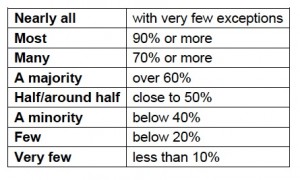Work based Personal Learning Environments
We will be together in the A3 session, on the Thursday 11th at 011 O’clock in the room Number 2.
I’m really happy of sharing with you this moment and I hope to have the possibility of trying a different kind of session that help us to find new ways for enriching or work and for find new ways of collaborating together.
I’ve thought on the possibility of organizing a different session, I’m absolutely open to all of your suggestions, but I would like to propose you the following organizing, if you like it:
11:10 to 11:15 Presentation and explanation of the session dynamic (me).
For it I would love to have a picture of you for including on the presentation.
from 11:15 to 11:45 an “Speed dating” session:
Each paper will be localized in three different “spaces” in the same classroom. The audience will be divided into three groups that will be passing by each paper and each one of you will have to explain your work in 9 minutes to three different groups of people. After 9 minutes I’ll ring an alarm to change the group.
I know you have to repeat the explanation 3 times, but It would help them to be more close to you and to be more “active” during the explanations. You could use for your presentation a slideshow (in your computer or tablet, a pamphlet, a paper, a trip tic, or whatever you want… BUT taking into account that you are presenting for few people only.
Attendees will have some papers to include questions and comments of the presentations that we will recover after the round of presenting.
If you don’t mind (if you do, please, let it me know) I will love to record each presentation in video for uploading to the web after the session.
11:50 to 12:05 Panel for answering:
We will try to make a panel with you three and try to answer to questions. I will have also some question for you, only in case you have not any Q from the public
12:05 to 12:30 Conclusions and PLN
After the questions I will ask you for doing a deliverable by paper WITH the attendees… maybe you can think in something to do around your paper (questions, short activity, or whatever) , or maybe we can do something generic… what about a kind of map of relationships between the research presented by you and the attendees research area (including contact details)?
I’m sure it seems a bit complicated, but it would be very active and challenging in order to take advantage of the papers and the groups that are going to be there…”

